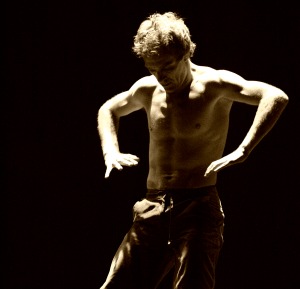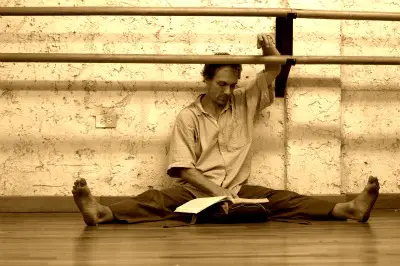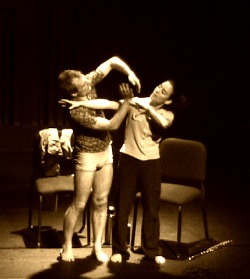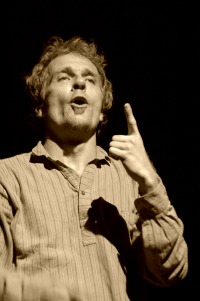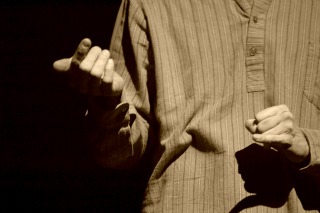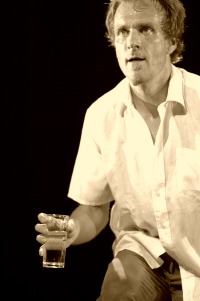| Back to Back Issues Page | |||
 |
|||
|
Dance Improvisation by Dominik Borucki, The Dance Thinker, Issue #21 July 26, 2012 |
|||
The Dance Thinker Issue # 21, July 26, 2012
https://www.contemporary-dance.org/The_Dance_Thinker-dance-improvisation.html
We have: - A page for contemporary dance announcements in which you can post your news about workshops, auditions, performances, meetings or any current, related items. - A contemporary dance blog where you can find current information and that will automatically distribute what you post in the announcements page to facebook, twitter and all subscribers to the site’s RSS feed. - A worldwide contemporary dance directory of schools, companies, scholarships and related websites to which you can also submit your contact information. - A special page for asking dance questions. - Several pages in which you can participate with contributions like articles, reviews, questions, comments or even ratings. - An archive for THE DANCE THINKER back issues, where you can always revisit precedent issues from our e-zine. - A contact page through which you can address to me directly if you have questions, ideas, wishes, suggestions or comments.
News
As many of you already know, we have a special page for dance poetry at our website. Starting from today and till the 26th August, our first Dance Poetry Contest will be open. The winner will receive a free copy of The handy e-book of CONTEMPORARY DANCE HISTORY. You just need to send an original poem or special statement about dance through our submission form. Contemporary-dance.org will choose the most outstanding submission and will send downloading instructions of the price to the winner! I will let you know the results in our next issue. Though only one submission will get the price, all the sent material will be posted in the dance poetry page (except those who are not original or are already uploaded in the web). Don’t miss the opportunity! Send your poetry or exceptional thoughts about dance before the deadline date!
Dominik visited my city recently and as usual, I didn’t want to miss the opportunity to have an interesting chat about dance. Therefore, I asked him to share some of his knowledge about dance improvisation with us. Below you’ll find a part of our conversation. You’ll see that it gets more and more interesting as you advance, so I recommend you to read until the end… :--)!
Contemporary-dance.org: How did you end up improvising and how long have you been doing it? Dominik Borucki: It was because of the dancing studies I undertook in Freiburg, at the TIP (School of Theater, Improvisation and Performance). At the time, the school was named ‘Bewegungs - art’, which means ‘Art of Movement’. I learnt about dance improvisation there, but actually, as the soccer player I was, I already liked to improvise. In soccer, you learn a technique and a tactic and then you’re constantly improvising. If you’re a good player is because you’re good at improvising. CDO: Did your studies at Freiburg led to an acting profile or was it more oriented towards dance? DB: That program is built within the frame of the ‘New Dance’. You study techniques of body awareness (like The Release Technique, The Body-Mind Centering, The Feldenkrais Method), Dance Technique, Movement Technique, Improvisation, Contact Improvisation and some theory. It points towards preparing you to be on stage and perform. CDO: When did you study this? DB: It was in 1992-93. CDO: So, you’ve been exploring dance improvisation for twenty years now. Where you attracted to this specific topic from the beginning of your career? DB: Well, before my studies in Freiburg I was always a very sportive person. I played soccer, but I was also into athletics, volleyball, swimming and some basketball. I always loved movement but those practices always had a goal, like jumping higher or running faster, etc. So, I loved it when I encountered Dance and Theater because they also used all that physicality but the goal was not the quantity of movement but its quality.
CDO: How would you define the improvisation you practice? What is it about? What is improvising for you? DB: This is called dance improvisation but it’s really about all human capacities that one would want to use on stage. It’s a scenic practice. You can use improvisation for many other purposes, like creating fixed choreographies, but I study it as an art in itself: Improvisation as an independent art form on stage. CDO: Could you say that improvisation has its own goal, just like sports have theirs? DB: One could say that the goal is to complete the sequences that are incomplete. This is a very personal, inner issue, which is related to your own desires about what you want to do in your life and on stage. It is also related to your own resistance for doing what you want to do. In improvisation, you use the capacity of completing. Completing means that in some way you transcend the resistance. Some people use the expression ‘it starts flowing’, to refer to that phenomenon. But it can also ‘flow’ without completing. When you complete, there’s no more difference between you, others and the audience. The whole energetic situation becomes your state and you just act, like functioning for something; you don’t control it anymore; it is not you who does it. CDO: How do you know that you achieved the goal of completing? What do you feel? What happens? How do you evaluate that the improvisation is functioning well? DB: That is something that is totally sensed. The mind can not control that. If the mind takes control you can not complete, because what happens during improvisation is unknown. The presence on stage, which includes your state and that of the dancers, the audience, the room and everything there, has what I call an ‘energetic constellation’. To complete it, you need to stop controlling it, because the mind is not the organ with the capacity to be aware of what has a presence there. CDO: So, do you need to connect with something like intuition? DB: Or sensing.
CDO: Does one always start to improvise from the base that something is incomplete? Is the sensing of what’s missing a starting point? DB: There’s always something incomplete. For example, if you get out from home to go somewhere, you complete that situation by arriving to that place. It may also happen that you can not get there, so the momentum stays within you. You have to complete something, even if it’s by saying “oh…it doesn’t matter”. If you had an appointment to get a great job for two years and you didn’t arrive on time, you may also say “oh…it doesn’t matter”. Obviously, the situation is not complete, even though you would like it to be complete. Some bad feeling of lost of an occasion remains, so the task is to decide what to do whit this, how to complete it. One does not complete anything with the logical function. Reasoning only helps to calm down other things that are happening, like emotions, tensions in the physical body, etc. What you need to do to complete the situation is to take action. The sensation of completing could be explained with the example of an art piece, in general terms. It is the ineffable of the work what makes it a piece of art. That is something that can not be expressed in words, as art is made out of representations, although they can include words. When an art piece is created instantaneously, the author transcends the current sense by adding new information about life and the relationships that are happening, without previously knowing about it. So, the improviser needs to be in the disposition of not knowing, in order to learn from the situation (its content, how it gets completed or what is needed to transcend it). At that point it becomes art; it is complete. ‘Transcending’ sounds like such a big thing but it simply means that there’s some content that was not represented previously and you give your self to the task of discovering it and giving it a sense in such a way that the representation brings about a comprehension. Again, it’s not a rational comprehension, but a sensed experience. That’s why I say ‘completing’. There’s a symbolic order that is widened through the artistic fact. The artist rewrites the events with a new symbolic order that is discovered at the moment in which the piece is created. CDO: Does it all have to happen during the improvisation or can there be some kind of premeditation? DB: There can be premeditation. For example, the structures or guidelines one uses to improvise. But all that is just another one of the elements you take in consideration to complete the situation. There are all kind of tricks while improvising and you might decide to use the guidelines or not, depending on what the situation needs to be completed.
CDO: Are there some principles or main skills you would teach to someone who wants to learn to improvise? DB: A very important thing is the capacity of observing. You need to learn to place yourself as what I call ‘the observer’. Commonly, we suppose that the observer is the ‘Freudian Id’ or ‘Me’, but the ‘Freudian Me’ is not really capable of creating a piece of art; it is capable of cooperating though. This ‘Me’ is what we all have learnt that we are. If we position ourselves as the ‘Me’, then we just work within what is known (ideas, logical issues or even sensed experiences, if the ‘Me’ is developed enough). But, the observer I’m talking about is located at an impersonal positioning. The observer is not me, Dominik for instance, but it is a part of my self that learns that it needs to transcend itself. From what we sense (and not from a logical perspective), we can know that we are constantly in the state of trying to complete ourselves. The source of this potential is what I call the soul. So when I train, I’m not the logical observer anymore but the impersonal observer that allows me to be what I have never been and what is yielding in my potentiality. CDO: Do you need something else than developing the impersonal observer? DB: Availability. You need the availability of acting on stage in that state. For example, if you are a very shy person and you get involved in a scene that needs that you act strongly and aggressively, you need to dispose your self to do that so that you can complete the situation. If you stay in the sate of what you think your personality is in the daily life, you have fewer opportunities to achieve the goal there. One becomes available by positioning one self as the impersonal observer. ‘Impersonal’ is not a very good word because actually, there’s no doubt that I am me, or myself; what I’m trying to name is something different from the ‘Me’: Dominik, Freudian Id. The identification of the impersonal observer is with the human potential, which is much wider. The ‘Freudian Me’ grows actually from the essence, from human potential, human life and life itself; it is the ‘Me’ who needs to learn about life (from all that), instead of being always in the position of controlling. CDO: Do we, dancers, need any specific skill to improvise, other than those you’ve mentioned? DB: Perceiving ‘the space of sensation’. The concept of the space of sensation is taken from the Hindu Healing technique called Sat Nam Rasayan. There, they call it ‘sensitive space’. It is something that happens close together with ‘the observer’ but this is concretely to notice everything that happens in the dimensions you are able to perceive, including physical sensations and gravity; everything that arrives to one’s consciousness provokes a sensation, also very concretely in the physical life. That is what one uses as a dancer to be able to use the body and act with the body in a relationship with everything that’s happening. The impersonal observer places her/him self within the space of sensation.
My interview with Dominik went on and on. He talked to me about the acting qualities from the model of the levels of reality, by John Pierrakos and other issues like related therapies and theories. The information over which his practice of improvisation is based is wide and deep, so there’s no place here to follow that thread. I may however write more articles about this topic in the future and will let you know, as always, through our e-zine and at the blogging section of contemporary-dance.org. Visit Dominik's website for more information. Remember that he will continue touring around the world, so pay attention to his workshops' schedules if you wish to deepen into all the knowledge he has to share.
1. Awaken and develop the impersonal observer. 2. Be available. 3. Place one’s self in the space of sensation. 4. Include what you want to do to complete.
If you can not view this message correctly, please copy and paste the following link fully in your browser's address bar:
Remember to feel free to answer this e-mail. Let me know what you think. I’m always opened to comments, suggestions, ideas, wishes...
Editor and Webmaster of contemporary-dance.org
|
|||
| Back to Back Issues Page |

